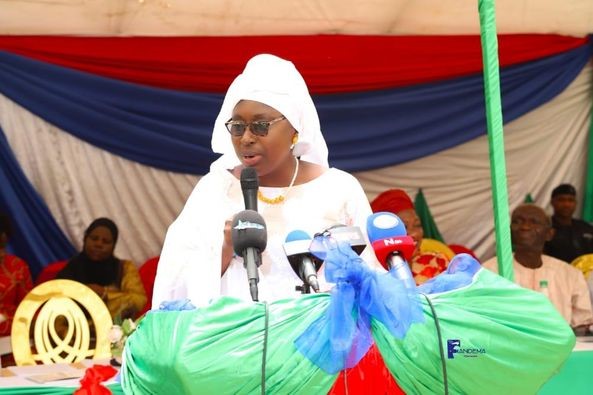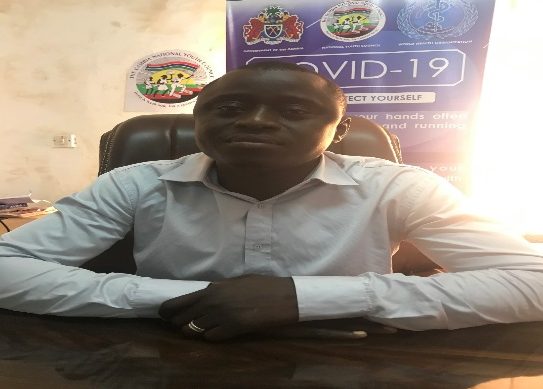As the national youth policy is basically the legal tool that is developed to dictate the activities of youth development in this country, it’s out of this backdrop that, The Voice Youth Bantaba brings to you an excerpt from the youth policy for people’s understanding.
The priority areas centered on youth development are as follows – The vision of this policy is to empower and render The Gambian Youth capable and willing to make sustainable life choices. Its accompanying mission is to establish a holistic and harmonious youth cohort imbued with adequate knowledge and competencies, strong professional ethics, spiritual and moral values; and a level of independence, patriotism, and commitment that give them life options to choose development and progress in keeping up with the national vision. The main goal and its accompanying objectives shall constitute the basis for investment and programming for the achievement of the vision by 2028.
In cognizance of the socio‐economic and political realities of this country, complemented by international best practices and commitments for youth empowerment and development, the priority policy issues and critical concerns facing The Gambia include:
I. Rethinking and redefining youth development as a deliberate formation process;
II. Advocating for the rethinking and realignment of the national educational systems to meet the quality and numerical knowledge and skill needs for national development;
III. Institutional Partnership Collaboration in Youth Development Programming and Investment;
IV. Institutionalising and strengthening coordination of policy implementation;
V. Establishing coequality between STEM, and general academic education and availing it to all youths of various aptitudes;
VI. Advocate for mainstreaming youth in economic planning and programming as perquisites to growth and employment creation;
VII. Identification and taking advantage of high employment potency sectors such as agriculture, fisheries & technology related services;
VIII. Curbing migration through formidable alternatives;
IX. Assuring all youths access to quality health and education;
X. Promoting sustained diversified and viable entrepreneurship development schemes and opportunities for youths.
Based on a three-year rolling strategic plan and under the coordination of the MOYS, the partnership framework of institutions for the implementation of this policy shall generate, implement, and revise a plan every three years over the life span of this policy. A permanent item on the National Cabinet Agenda shall be the Status of Implementation of the National Youth Policy and this status report shall be prepared jointly by the partner institutions responsible for its implementation – and submitted by the MOYS for cabinet consideration every quarter.
4.1 Rethinking and redefining youth development as a deliberate formation process the young people are a direct result of the natural process of human and national perpetuity assurance, and they must be deliberately formed to pursue such perpetuity. Whilst age 15 is the beginning of the youth age, it must be said that the socio-cultural molding of the youth commences from 0 to 14 years within families, schools, and the community at large– this policy refers to this age group 0 – 14 as ‘potential youth’.
In this process, social and economic policy shall take into account at all levels, the specific role and probable outcomes of all policy programs on the evolving nature of children from birth to entry into the youth age. The type of health provision, education, socialisation (religious, cultural, etc.), and character formation, must reflect and be pursuant to transforming our children into educated, skilled, and properly comported young men and women.
4.2 Advocating for the rethinking and realigning of the national educational systems to meet the quality and numerical knowledge and skill needs for national development. By this policy, the education system would need to be transformed to ensure that all along the continuum of the education system from primary to tertiary (i.e. university), at the end of each level and based on the selected assessment criteria for transition to the next, at least 60% of all the children/young men and women who are assessed, qualify; and have access to the next level.
4.3 Institutional Partnership Collaboration in Youth Development Programming and Investment
Since youths are the greatest investment that The Gambia can make in its citizens and that it is one investment, which when successful has the greatest opportunity of transforming the nation from underdevelopment to prosperity and security, the task of forming, empowering, and putting the youth energy into national use shall be an institutional partnership process cutting across government, the private sector and NGO and donor sectors.
4.4 Institutionalising and strengthening coordination of policy implementation
Given the special importance of investment in youths, this process shall be in accordance with the partnership framework of this policy. The following structures shall be established to enable this partnership framework:
V. MOYS shall be responsible and capacitated to be able to coordinate the implementation and review of this policy.
VI. This will require a restructuring of the MOYSin determining the suitability of its departmental structures for the task and clearly defining the roles in the process of each of its satellite institutions – NYC, NSC, NYSS, PIA, and NEDI.
VII. An M & E framework for the implementation of this policy, carrying out impact evaluations and studies on youths and the economy and society shall be generated and implemented by the partner institutions.
VIII. Cabinet shall require the partner
institutions under the leadership of the MOYS to report on the outcomes of the implementation to the cabinet every quarter





